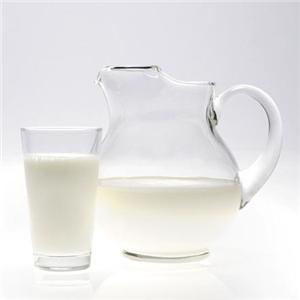Feather-grass disease of agricultural cattle: diagnosis and treatment

This disease develops with mechanical damage to the awns of the fetus of various types of feather grass of the mucous membrane of the mouth, pharynx, adjacent tissues and organs of animals. Seeds of feather grass pierce the skin of farm animals, causing local inflammation.
The disease occurs when feeding animals with feather grass hay, when eating feather grass stems and grains, or when grazing in the steppe zones in areas where feather grass grows. The disease is common in sheep, cattle and horses.
After the ear ripens, the seeds are easily separated from the stem, then shot to the side. Clinging to the fur, then the seed with each movement moves forward to the body of the animal and is difficult to remove.
Separate parts of different types of feather grass have different traumatic effects. In horses and cattle, deep tissue damage is caused by the leaves of all types of feather grasses and less often by their caryopses. In sheep, the grains and leaves of the feather grass are introduced into the wool, and then into the skin, affecting the awns of the hairy feather grass.
From the oral cavity, the caryopsis and awn of the feather grass, during the chewing process, migrate to the region of the parotid salivary gland, supraorbital cavity, jaw joint, intermaxillary space and other parts of the HEAD, where they cause the formation of fistulas, purulent-necrotic foci, the intensity of development of which depends on the level of their infections.
The most characteristic signs of feather grass disease are difficulty chewing food, salivation, coughing, and an unpleasant odor from the oral cavity.
The injured tissue is edematous, a limited inflammatory process is observed, followed by the formation of non-healing fistulas, often purulent foci appear in the places where the awns are introduced, which gradually merge, forming abscesses. Body temperature rises by 2-3 °C. From constant anxiety and pain, animals are gradually exhausted.
Keratoconjunctivitis is observed when the eyes are affected by caryopses.
In places of localization of caryopses, palpation can reveal foci of compacted skin, the presence of various sizes of abscesses. After spontaneous opening of abscesses, thick viscous pus is released, forming purulent fistulas. With damage to the tissues of the intermaxillary space, chewing muscles and tongue, the body temperature rises, the animals quickly lose weight.
The feather grass disease is diagnosed according to clinical signs and on the basis of the detection of feather grass awns located in fistulas.
For the purposes of prevention, it is recommended to use for grazing areas of meadows with feather grass before its flowering; avoid feeding with feather grass hay and chaff; hay must be harvested no later than the start of heading of feather grass; moistening before feeding hay containing feather grass, steaming and mixing it with other hay is also effective. To slow down the fruiting of feather grass, it is recommended to carry out early grassing of feather grass pastures.
The most effective means of dealing with feather grass is mowing the feather grass before it blooms.
Treatment is symptomatic. The oral cavity is examined and the spines of the feather grass are removed from the mucous membrane. The fistulous passages are washed with 3% hydrogen peroxide. Purulent-necrotic foci and abscesses are opened, local and general antiseptic therapy ( antibiotics , sulfonamides) is used.
Read together with it:
- Ученые Беларуси разработали новый ветеринарный препарат для лечения заболеваний крупного рогатого скотаНовый препарат, названный «Антипестивир-ВД», стал первым противовирусным средством на рынке, эффективным против болезней слизистых у коров, включая скрытые формы инфекции. В состав препарата входят компоненты, произведенные из местного сырья, которые активируют иммунный ответ животного. На этапе клинических испытаний препарат продемонстрировал высокую эффективность: 63,3% животных выздоровели в те...
- MGAP ужесточает контроль после обнаружения остатков эктопаразитицидов в говядинеМинистерство животноводства, сельского хозяйства и рыболовства ( MGAP ) через Главное управление животноводческих служб ( DGSG ) издало Постановление № 311/2025, которое устанавливает в качестве серьезного или очень серьезного правонарушения обнаружение остатков эктопаразитицидных ветеринарных препаратов у крупного рогатого скота , предназначенного на убой, в количествах, превышающих установленные...
- Чили: ChileMEAT предупреждает об убытках более чем в 6 миллиардов долларов из-за остановки производства говядиныЧилийская ассоциация мясоперерабатывающих и холодильных предприятий (ChileMEAT) выпустил официальное предупреждение, выражающее глубокую обеспокоенность критической ситуацией в южной части страныКризис стал результатом 15 дней непрерывной мобилизации должностных лиц, объединенных в Национальную ассоциацию должностных лиц сельскохозяйственной и животноводческой службы (Asfusag) , что привело к полн...
- Аграрии Дагестана завершают осенний перегон скота и заготовку кормовЖивотноводы Дагестана перегнали на зимние пастбища более 1 млн голов скота. Для успешной зимовки заготовлено свыше 1,5 млн тонн кормов. В зоны отгонного животноводства поступило уже 998 тыс. голов мелкого рогатого скота, 41 тыс. голов крупного рогатого скота и 1613 лошадей. В пути остаются более 300 тыс. овец и коз, около 99 тыс. голов КРС и 2 тыс. лошадей. Планируется, что все они будут благополу...
- В Беларуси в январе-октябре произвели сельхозпродукции на Br35,8 млрд17 ноября, Минск. Производство продукции сельского хозяйства в январе-октябре 2025 года в хозяйствах всех категорий (в сельскохозяйственных организациях, крестьянских (фермерских) хозяйствах, хозяйствах населения) составило Br35,8 млрд, или в сопоставимых ценах 99,9% к уровню января-октября 2024 года. Об этом сообщили БЕЛТА в Национальном статистическом комитете. В сельскохозяйственных организация...
- An HSE expert reported on the "evolution of inequality" in access to healthcare.An HSE researcher analyzed Russians' access to healthcare over a ten-year period. In 2021, the influence of financial factors became noticeable for the first time: low income reduces the likelihood of visiting a DOCTOR.Over the ten years from 2011 to 2021, the number of Russians requiring medical care but not receiving it remained virtually unchanged, according to a study by Lyudmila Zasimova, hea...
- He crawled to the icon with prayer. The true story of a man who overcame drug addiction.Alexander Ovchinnikov. Topic News. Our project's hero was a drug addict for many years. The thought that this was a dead end never left him, but his addiction proved stronger. One day, when he could no longer walk, he crawled to an icon in prayer. This became his first step toward a new life. Today, he heads a charity center that helps those who have given up hope and are unable to quit ALCOHOL an...
- Низкое предложение и устойчивый спрос: в Аргентине растут цены на мясоЦены на говядину снова выросли, что отразилось на полках супермаркетов и в мясных магазинах. За последние две недели розничные цены выросли на 8–12%, а на некоторые популярные отрубы рост превысил 15% по сравнению с октябрем. Тем не менее, продажи остаются высокими: потребители продолжают покупать, принимая новые цены и закрепляя тенденцию, которая повторяется каждый год в конце года, когда спрос ...






























































